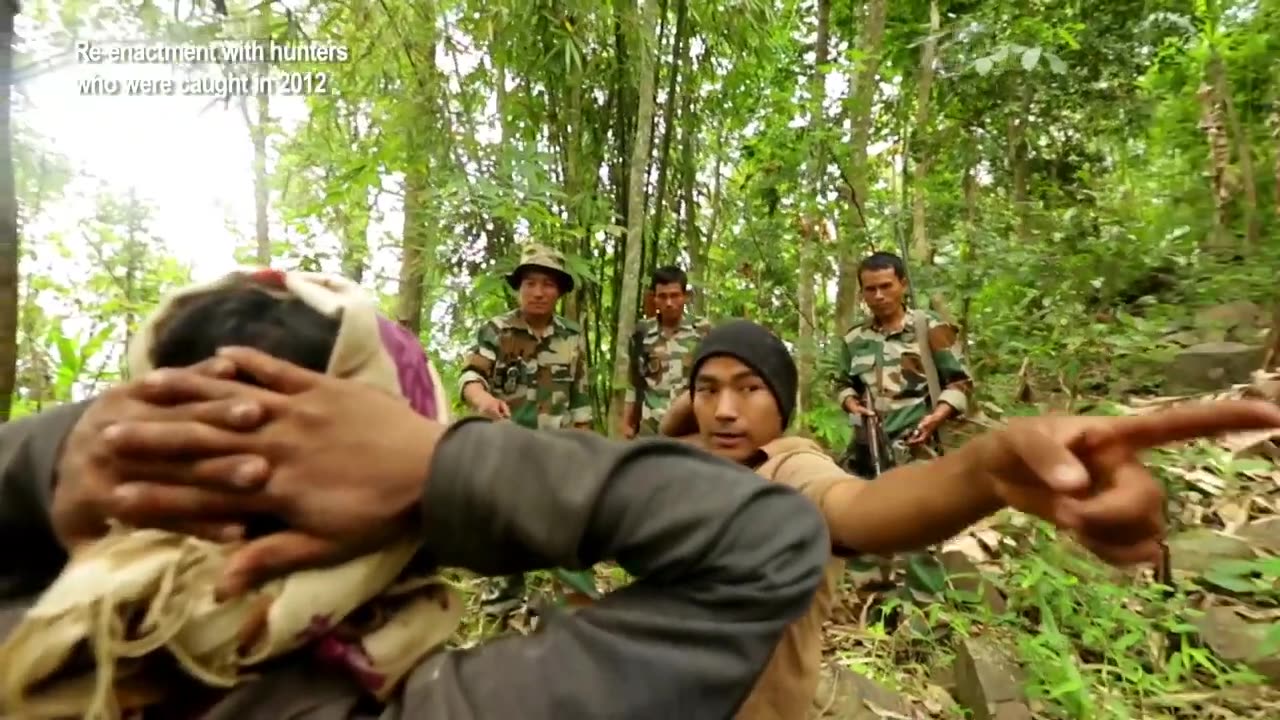Premium Only Content

Nagaland Wildlife Conservation by the Local Villagers-English Information
Nagaland is one of the states in India that is located to some of the most famous wildlife sanctuaries and national parks in the country. Some of them are Ghosu bird sanctuary, Rangapahar reserve forest, Ntangki national park, Fakim wildlife sanctuary and many more. Amongst all the wildlife reserves of Nagaland, the most prominent one is Ntangki National Park or Intanki Wildlife Sanctuary. Spread over 202.02 sq km, Ntangki National Park is home to species like Hoolock Gibbon, Palm Civets, Sloth Bear, Wild Dogs, Golden Langur, Tiger, Python, Flying Squirrel, and Monitor Lizard.Due to the continuous and intense engagement with the communities, the three villages of Sukhai, Kivikhu and Ghukhuyi in Zunheboto district of Nagaland formally declared around a total of 939 hectares of biodiversity rich forest as community-conserved areas in respective villages, which are now being jointly managed by them (see Figure 1 and Table 1). However, apart from these CCAs, they have also banned hunting and destructive fishing across the entire landscape of their villages, covering 3,751 hectares of forests and rivers. In general, each CCA on average is about 25% of the total landscape area owned by the village, which is quite large. The CCAs were delineated and mapped and the boundaries were well-defined through demarcation, digitization and participatory mapping. This resulted in improved management of common resources. Also, a blanket ban on hunting wild animals and birds, a ban on fishing by use of explosives, chemicals and generators, strict prohibition of cutting offire-wood/felling of trees, as well as a ban on collection of canes and other non-timber forest products for domestic and/or commercial purposes in the CCAs, have ensured conservation of large contiguous forest areas along with the unique endemic biodiversity they support.
Community engagement through consultation, conservation education, and public sensitization approaches was used to increase awareness of threats and integrated approaches at the community and stakeholder level. This was achieved through participatory planning, knowledge sharing, and capacity building. Around 30 sensitization campaigns were organized within the three pilot villages and on other community platforms like the local Ahuna festival, thus reaching out to a total of around 1,200 individuals directly, along with a positive impact on more than 10,000 individuals indirectly living in the vicinity of the project site. This resulted in many more villages urging a replication of these methods to manage their SEPLs the latest being Chinoketa
-
![[ Tekken Tuesday ] TNS Tekken Tournament Watch Party](https://1a-1791.com/video/fww1/5b/s8/1/4/a/C/g/4aCgz.0kob-small--Tekken-Tuesday-TNS-Watch-P.jpg) LIVE
LIVE
CHiLi XDD
49 minutes ago[ Tekken Tuesday ] TNS Tekken Tournament Watch Party
26 watching -
 1:53:04
1:53:04
Glenn Greenwald
4 hours agoIsrael Bombs Qatar and Trump Reacts; The Hoax to Blame Russia for Jamming EU President's Plane GPS; Mamdani Soars in Polls as he Tries to Moderate on Israel | SYSTEM UPDATE #511
73.7K40 -
 2:47:57
2:47:57
Barry Cunningham
3 hours agoLIVE: PRESIDENT TRUMP ANNOUNCEMENT | IRYNA ZARUTSKA DESERVES IMMEDIATE JUSTICE! NO WAITING!
42.6K33 -
 LIVE
LIVE
cosmicvandenim
11 hours agoCOSMIC VAN DENIM | Precision Tuning | WARZONE
131 watching -
 LIVE
LIVE
Anthony Rogers
1 day agoEpisode 382 - Crystal Balls & Comedy Calls
42 watching -
 LIVE
LIVE
LFA TV
15 hours agoLFA TV ALL DAY STREAM - TUESDAY 9/9/25
839 watching -
 LIVE
LIVE
BubbaSZN
1 hour ago🔴 LIVE - 1 WEEK UNTIL RELEASE (SKATE.)
8 watching -
 LIVE
LIVE
JerryAereola
1 hour agoJerryAereola -AVOIDING THE COUNTERSNIPERS - DayZ LIVE 🔴
13 watching -
 LIVE
LIVE
Cewpins
45 minutes agoStorz & Bickel !VEAZY Sesh *New Device*🔥High🍃420💨!MJ !giveaway
45 watching -
 3:23:21
3:23:21
MattMorseTV
5 hours ago $10.11 earned🔴Conflict in EASTERN EUROPE.🔴
59.1K30